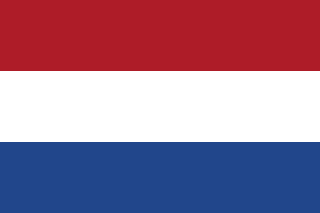Portrait of Father Menten
| Dating | July 28, 1900 |
|---|---|
| Material / technique | oil on canvas |
| Dimensions | 196 x 110 cm |
| Literature | J. Blonden, 'Henri Goovaerts. Een bekende Maastrichtsche schilder.' in: Limburger Koerier, August, 12, 1933 Knippenberg, H.H., Memoriaal. Herinneringsbeelden met enige portretten en naamregister, Helmond 1949, p. 75 |
| Exhibitions | |
| Provenance | |
| Current residence | Parsonage of the Saint Matthew parish, Maastricht, the Netherlands |
| Signature | b.l. with paint: HENDRIK GOOVAERTS 28 JULY 1900 |
| Headings | |
| Remarks | Around 1900, anyone in Maastricht who thought highly of himself in any way had his portrait painted by Henri Goovaerts. In June 1900 Goovaerts had portrayed the mayor of the city and a month later the portrait of Father Ernest Menten followed. Menten allowed himself to be depicted life-size and in best bib and tucker. In the presentation of the ruby-red and brocade clothes of the priest Goovaerts showed his love and talent for depicting rich fabrics. Partly because of this, the portrait acquired the appeal of a papal portrait, of which several great examples in a similarly warm colour palette are known in the history of art. According to Father Hover, the current priest of the Saint Matthew parish, the story goes that Menten, however, was not entirely satisfied with the painting. He would not have liked the appearance of his head, after which it was adjusted. When considering the painting it is striking that the head is relatively small. It also seems to be painted in a slightly cooler colour palette than the rest of the portrait. The style of painting does show the hand of Goovaerts. X-ray photography could reveal whether there is indeed another painting under the top layer. From 1891 until his death, Monseigneur Dr. Josephus Ernestus Hubertus Menten (1834-1920) was a priest of the Saint Matthew parish in Maastricht. He was known as a vain and power-hungry man who did little for the parish. Later on his successor wrote about him in the parish register: ‘He himself did not write anything down about his stay in this parish and it seems prudent to me not to reveal my own impressions.’ (Reference: Ubachs, P.J.H., Sint Matthijskerk, Maastrichts Silhouet, no. 13, Maastricht 1993, p. 49.) In 1933 the portrait of Menten hung in the study room of the municipal archive in Maastricht (reference: Blonden 1933). When Father Hover took office in the parsonage in 1992, the painting happened te be in the Bonnefantenmuseum. Hover’s predecessor, Father Rouwet, had banished it because he did not want to look at ‘that sour face’. Father Hover brought Menten's portrait back to the parsonage, to put it in its original context again. |

